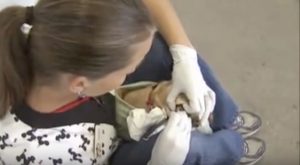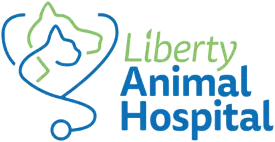
CLICK HERE TO WATCH VIDEO from Californiafrom 2011 that provides a good overview of theconcerns about no-anesthesia dental cleanings.
Talk crops up every now and then about no-anesthesia dental cleanings for pets. We are passionate advocates for your pet’s health and we have strong opinions on this practice. We wanted to give you a deep look into what it involves so that you have a complete picture. This way, you can understand why we come down firmly against no-anesthesia dental cleanings for your pet.
#1: They’re Primarily Cosmetic Instead of Therapeutic
With this approach, the only plaque and tartar that can be removed is the part visible above the gum line. These types of “cleanings” fail to address what’s underneath. This leaves your pet with buildup that attacks the strength, health, and viability of not only the tooth, but also the jaw. Dental disease affects liver and heart function, digestion, and general comfort level. It can also lead to infection, with bacteria able to enter the bloodstream from the gums and travel throughout the rest of the body. It is possible that this very minimal level of cleaning could be appropriate for a dog with a very minimal level of plaque and tartar. However, we know that approximately 80% of dogs and cats have dental/periodontal disease by 3 years of age. And fully 50% of canine and feline patients over 5 years of age have at least one painful dental problem.
#2: There’s No Chance to Look Deeper, So Dental Disease Has Time to Worsen
Nobody takes an x-ray of your pet’s mouth in a no-anesthesia dental cleaning. That’s a problem, because most oral disease happens below the visible surfaces of your dog’s or cat’s mouth. Let’s say your pet has dental disease below the gumline (most do). Instead of a conventional cleaning, you opt for a no-anesthesia cleaning this year. This time next year, your pet’s dental disease will have gotten worse…possibly to the point of causing liver or heart problems or systemic infection. And in the meantime, nobody’s gotten close enough to examine your pet’s gums, tongue, or roof of the mouth for potential problems.
#3: Your Pet May Not Tolerate It Long Enough to Get Any Benefit
Maybe we’re wrong, but it just seems that trying to use sharp instruments on the moving target of a dog’s mouth while he or she is restrained really can’t end well. Chances are good that your pet’s patience will run out long before the procedure is complete. You’ll either need to pay to try again another day, or pay for a conventional cleaning and exam under anesthesia. In that case, have you really saved anything?
#4: The Risks of Anesthesia are Lower than Ever
Many pet owners mistakenly believe it’s risky for their pet to go under general anesthesia for a dental cleaning. The reality is that modern anesthetics are very safe, are quickly cleared from the body, and can be quickly reversed if a problem occurs during the procedure. In addition, continuous monitoring of vital signs adds to your pet’s safety. Blood tests and other lab work for senior pets or pets with health problems will identify high-risk pets who should not receive general anesthesia.
#5: Depending on Who Performs It and How, It May Be Illegal in Colorado
According to Colorado’s veterinary practice act, dentistry is defined as “diagnosing, treating, correcting, changing, relieving or preventing abnormalities of the oral cavity, maxillofacial area or associated structures, including surgical, non-surgical or related procedures are considered within the realm of veterinary practice, as well as the application or use of any instrument or device to any portion of an animal’s tooth, gum or any related tissue for the prevention, cure or relief of any wound, fracture, injury or disease of an animal’s tooth, gum or related tissue.” Preventive dental procedures like removing plaque or stains and filing or polishing of tooth surfaces. The practice of dentistry may be delegated to veterinary personnel under the directsupervision of a licensed veterinarian.”
The Colorado Veterinary Medical Board has ruled that any institution advertising or representing that no-anesthesia dental cleanings are equivalent to a dental cleaning performed under anesthesia is in violation of section 12-64-111(1)(d) and (j), C.R.S. This ruling gives the Board the ability to discipline & fine a licensee (veterinarian) for fraud, deception, misrepresentation, or dishonest or illegal practices in or connected with the practice of veterinary medicine; and the use of advertising or solicitation which is false or misleading.
The Board can take action against non-licensed individuals (an example of this would be groomers) if it is determined that the service they are providing is defined as “dentistry” and is not being performed under the “direct supervision” of a Colorado licensed veterinarian. In those cases, the Board may issue an Order to Cease & Desist the activity to the unlicensed individual and refer them for criminal prosecution with the District Attorney’s office since the person has committed a class 2 misdemeanor for the first offense; for the second or any subsequent offense it will be classified as a class 6 felony.
We appreciate you taking the time to learn more about the risks of no-anesthesia cleanings and the benefits of conventional dental exams and cleanings with general anesthesia. We invite you to schedule a dental exam and cleaning for your pet. CLICK HERE TO SCHEDULE.

Recent Comments